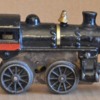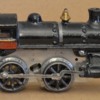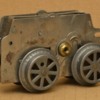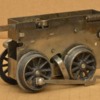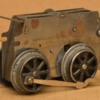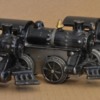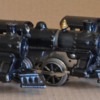for the most part, Hafner only made five common cast iron locomotive styles from 1914 until the early 30's. the early design, #100, #109 & #112 and the late #109 & #110 shells. but if you think there isn't enough here to form a collection, think again.
the early #100 and #109/110* locomotives are the easiest to find. here is the basic #100 economy locomotive...
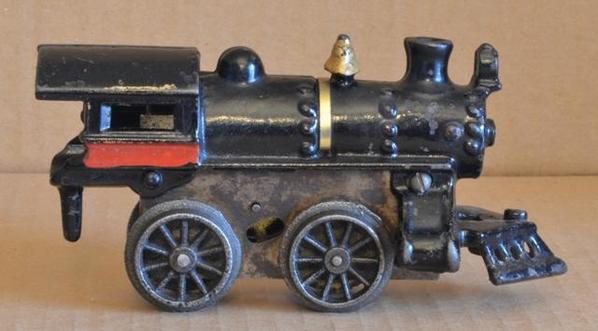
it has no brake and since the cylinder castings are incomplete, it cannot support siderods.
*[i have an issue with Greenberg (Doyle) when it comes to his listing of the #109 & #110 (early) locomotives which probably happened in editing. the text states, "Number taken from shell casting and from catalogue.", but no matter how you interpret it, i do not believe a shell casting with an embossed "110" exists since his description of the #109 & #110 shells are identical, the only difference being the motor. his listing of a #109 uses the same plain motor as in the model #100 while his listing for the #110 has a motor with brake and siderods attached. so, while #110 might be a catalog designation, all shells (i have seen) are stamped "109R" and "109L". to be less confusing, i only refer to this shell as a #109 locomotive regardless of the motor it uses though i sometimes designate basic or deluxe model where appropriate.]
with that out of the way, in comparison, the #109 is very similar in design but about ½" longer...
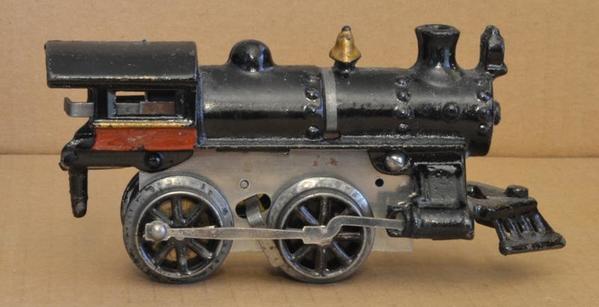
the most distinguishing difference between the two shells is the location of the motor mounting screw. on the #100 it is centered on the cylinder centerline (no hole is on the opposite side) and on the #109, the screw is located behind the cylinder (there are holes on both sides, but only the right side of the motor is tapped to hold the mounting screw). and of course if it does have siderods, it must be a #109, while having a brake without any siderods is almost certainly a motor that used to have siderods.
as a collector, you could stop at these two basic models, but what fun would that be.
there are three motor variations that Hafner produced during the cast iron era...
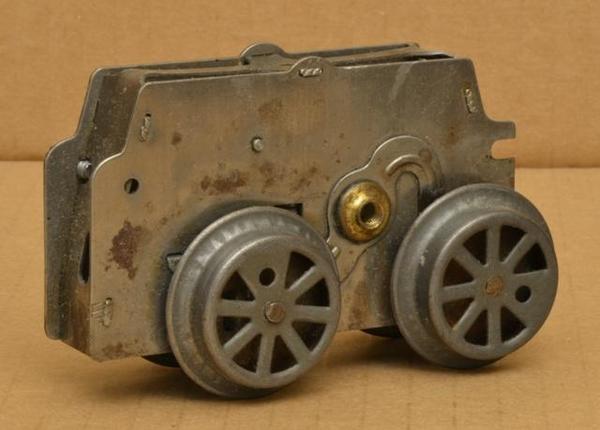
the economy motor was the only one found in the #100 model.
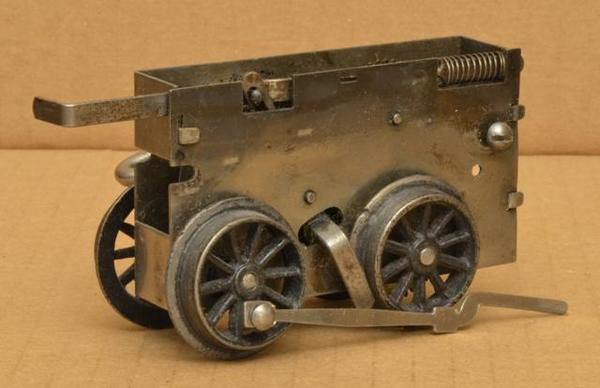
the friction wheel brake was the early deluxe motor design...
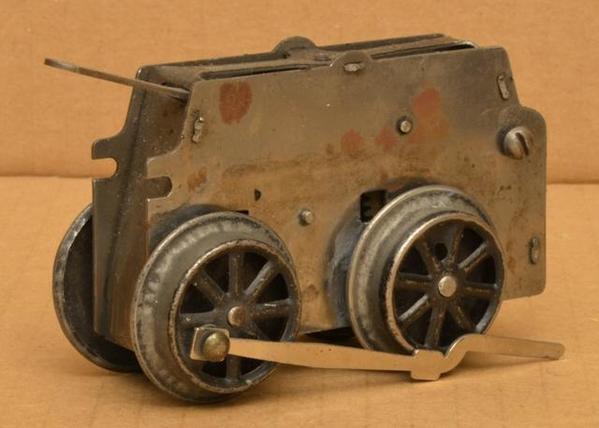
replaced with the paddle/ pivot brake in later production.
a note about the two different brake designs. the early friction wheel brake was the more complex mechanism in comparison, and is by far the better of the two in my opinion. while this design uses spring tension to hold the friction brake in place, the paddle design is a lever which throws a pin into the governor which can easily damage the governor especially if the brake lever is used while the motor is not turning.
three different motor variations, ok but the differences do not stop there... notice the wheels which went through three different versions from 1914 to 1932. the earliest models featured 10-spoke cast iron drivers, but shortly after war shortages started to affect the industry, these were replaced with two different variations of 8-spoked stamped steel drivers which i refer to as curved (early) and flat spoke (later) versions.
from top to bottom, the three motors shown display the three different wheels... flat spoke, cast iron and curved spoke. i have no hard data on this, but from my experience i'd say the cast iron wheel motors are much less common than the other two.
getting the groups together...
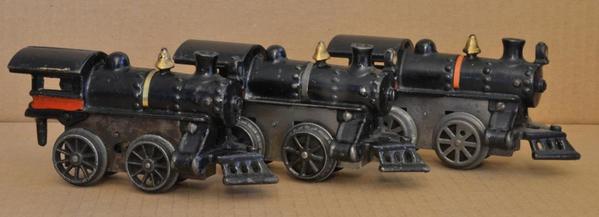
the three different wheeled #100 models...
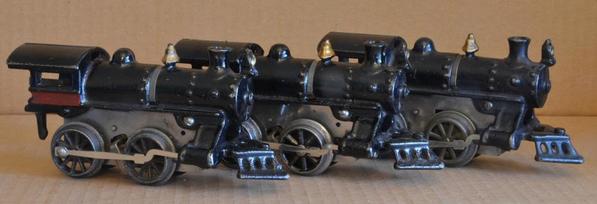
and three different deluxe #109 models.
to eliminate a few variations, i doubt if you will find a paddle brake on a motor with cast iron wheels or a wheel brake with flat spoke wheels, but when you do the math that is still a lot of engines. and of course the #109 was apparently available with the economy motors, but seeing they are completely interchangeable, to me that makes them a needless find.
and if you hadn't noticed before now... check the boiler bands. while the only color i've seen on the #109 shell is the basic grey metal band, i have both a red and a gold boiler band versions of the #100.
fun stuff!
cheers...gary




